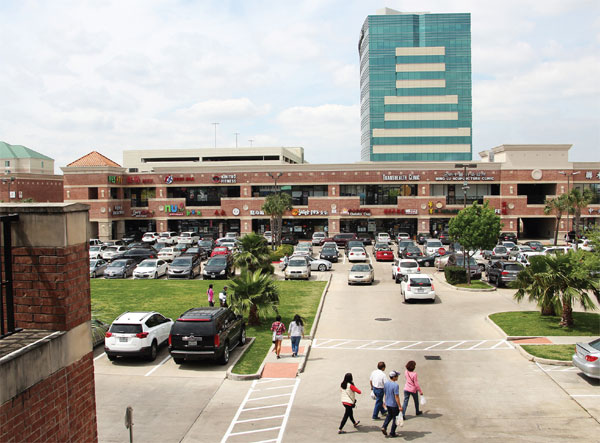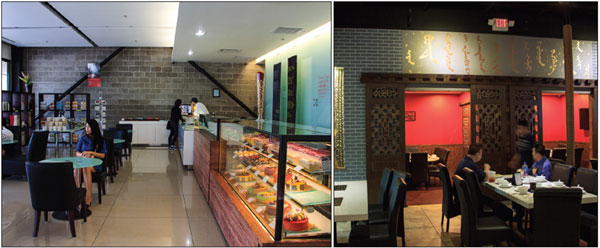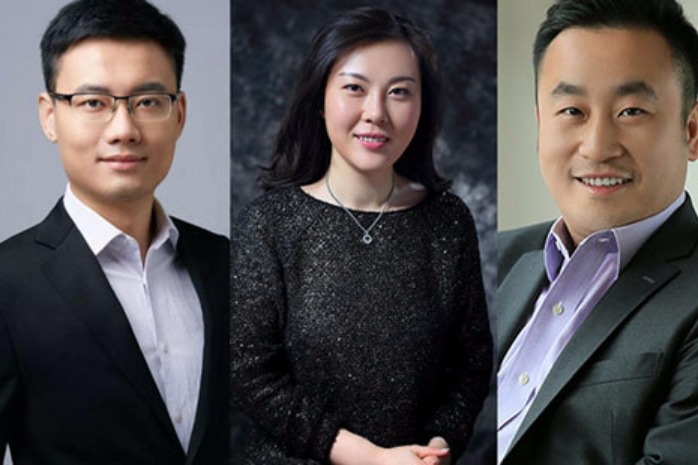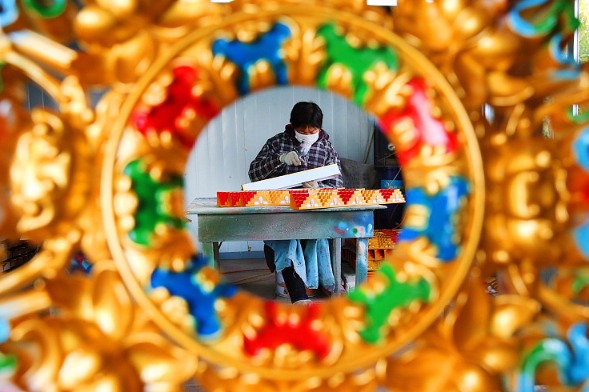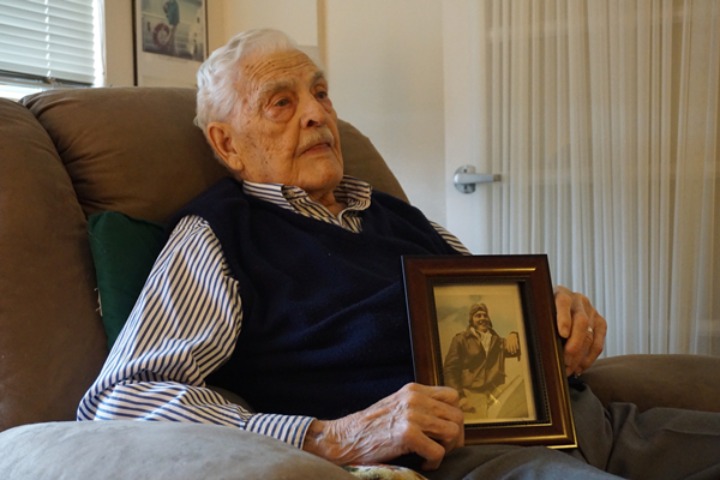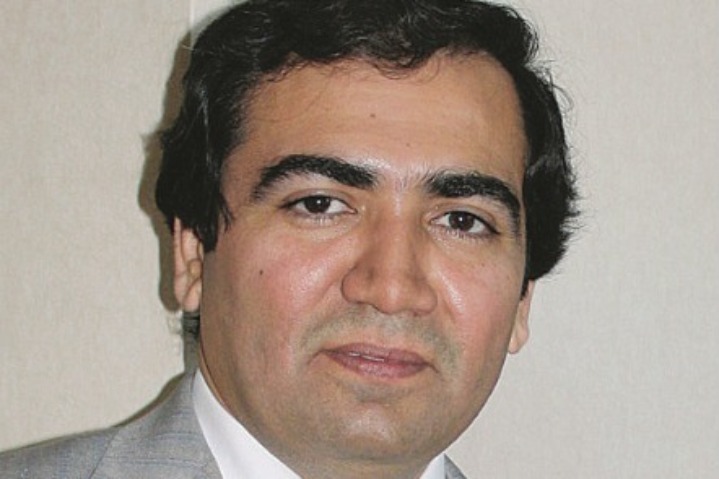A modern look for Houston's Chinatown
Move over dragons, red columns and green roofs, Houston's Chinatown is getting a sleek and modern makeover, reports MAY ZHOU in Houston.
In 1998, Jesse Wu and his wife opened the Jungle Caf in DIHO Square, one of the earliest shopping malls built in Houston's Chinatown. They moved to Dun Huang Plaza in the heart of Houston's Chinatown a few years ago.
Spacious, light, and clean-lined, the relocated patisserie with "splendidly elegant and modernized design", as one reviewer described it, doesn't display a design that is characteristically Chinese, just like the architecture of the Dun Huang Plaza.
| The design of the Dun Huang Plaza, built in 2000s with the AFNB building in the background, is completely modern without any Chinese element, says architect Edward Tsao. Photos by May Zhou / China Daily |
| The Western-styled Jungle Caf and Chinese-styled Mongolian Hotpot represent the current design focus at many of today's businesses in Houston's Chinatown. |
"The design was my idea. We kept and washed the original brick wall and pipelines on one side to give the place a natural look. The seating and decoration are simple," said Wu. "At the previous location, our customers were primarily Chinese and some other Asians. Now, one-third to half of our business is from non-Asian customers."
The interior design change at the Jungle Caf and at other restaurants and businesses reflects change on a larger scale as exhibited by the style of shopping centers and business buildings that make up Chinatown. The area stretches 10 square miles with most businesses in 2.3 square miles.
In the past, most restaurant owners in Houston's Chinatown would just paint the walls, put down tables and chairs, hang up a few paintings and call it done. They have come a long way from then, and now the move is to a more modern look, outside and inside, and often without or with just a minimum of Chinese elements.
Hanlin Zhu, who holds a design degree from Sichuan Fine Arts Institute, said that in the past typical Chinese elements such as cherry wood furniture, dragons and phoenixes were widely used in interior design.
Zhu has been doing commercial interior design for businesses for more than a decade, and he said what clients want now is quite different from the past.
'Modern look'
"Hardly anyone asks for that when it comes to design," he said. "They want a more modern look, and if they desire some Chinese element, it's presented in a more elegant and undertone fashion - such as sparse use of the colors yellow or red, or a modern version of traditional latticed windows, usually in harmony with a modern setting."
"Most new business owners now are young people in their 30s. They are either second generation born here or emigrated from China with some money. Many of them are well-educated professionals with good taste. They are more fashionable and modern with new ideas," said Zhu.
Edward Tsao, a local architect from Taiwan, has extensive knowledge of the transformation in style and taste of Houston's Chinatown.
"When I first came here to study architecture at the University of Houston in 1981, the first and only major Chinese restaurant was the Golden Palace on Bellaire Boulevard. It's still in business today. Its decoration is traditionally Chinese - a red wall with a pair of phoenix painted in gold and colors, just like many other Chinese restaurants during that time," said Tsao.
DIHO Plaza, the first Chinatown shopping center, was built in 1983. The L-shaped one-story structure was designed by the son of one of the developers.
"At that time the general design concept was that a Chinatown in a major US city needed to have some Chinese characteristics. So it sports red columns and a roof made of green cylinder tiles specially imported from China," said Tsao.
The second shopping center was the Dynasty Plaza. It was designed by a Hong Kong architect who used a more modern style to present a clean image of Chinatown, which has been improved on ever since. The two-story mall used modern bricks and modern form; overall appealing and pleasing to the eyes without strong Chinese elements. "However, it's too small," said Tsao.
In between those developments, existing American-styled shopping malls and office buildings were purchased by Chinese that increased the size of Houston's Chinatown.
The next two major shopping centers to be constructed - Hong Kong City Mall and Sterling Plaza - still reflect the developers' Chinese roots. Hong Kong City Mall combined a green roof faade and red columns on the ground floor with a steel and glass modern style for the second floor. A couple of Chinese pavilion styled arches decorate the huge parking lot.
Sterling Plaza's Chinese element is less prominent. Red columns have been abandoned in favor of a modern look, but there is a decorative green roof with a couple of octagon-shaped roof structures much like the traditional Chinese pavilion roof but in a simplified version.
Tsao designed the Corporate Office Plaza that was built in 2005.
"It's a professional office complex built with modern concrete tilt. The design is simple and clean to give a professional feel. Red awnings and latticed windows were used to give it a hint of Chinese feel," he said.
While the Jungle Caf is completely modern without a hint of Chinese flavor, the Mongolian Hotpot, a fondue restaurant chain from China, uses Chinese elements in a tasteful and modern style.
The Hotpot has two locations. Most customers at its Chinatown location are Asian, while the one outside of Chinatown gets half its business from non-Asians, according to Dan Wong, manager of the Chinatown location.
Atypical of the average Chinese restaurant, the Hotpot's kitchen can be seen by customers through a big glass panel.
"We are confident enough about the quality of our service that we left the kitchen visible for all to see what's being done there," said Wong.
Zhang Fan, an interior designer with an art degree, designed the fondue restaurant in Chinatown. It features typical Chinese color of red and gold as well as doors with latticed windows. The art of calligraphy is also visible but presented as wall paper, not as hanging pieces of art as in the traditional Chinese style.
Rustic wood paneling and grey brick walls give the restaurant a natural look. The modern treatment of Chinese cultural elements is well meshed with Western-style white tables and black leather chairs.
"Now most would seek a themed design with uniformed style. They care about the aesthetic aspect of the place more than before," said Zhang.
Dropping the past
The largest addition to Chinatown has been the Dun Huang Plaza on roughly 10 acres of land. It was develop in three stages during the first decade of the new millennium.

Dun Huang was nicely done, said Tsao.
"Its design was completely modern without any Chinese element. The stone panel, molding, steel railing and red brick exterior cost a lot of extra money, but it's very pleasing to the eyes and gives Chinatown a whole new image," said Tsao.
Besides shopping malls, two other major structures have played a role in shaping the image of Houston's Chinatown - the Golden Bank building and the American First National Bank (AFNB) building, both on the newly improved seven-lane Bellaire Boulevard, and only a couple of blocks away from each other. The 12-story AFNB is the tallest structure in Chinatown.
Both buildings were the brainchildren of Henry Wu, founder and chairman of AFNB, and a major shareholder in the Golden Bank.
The Golden Bank was formed in 1985 by a small group of Chinese immigrants mostly from Taiwan. Wu, a chemical engineer who made money from importing and exporting plastic materials, took control of the bank in 1992. Then its total assets were $50 million.
"At that time I had in mind to build a landmark building in Chinatown, and I thought it would be good for business because I do think image is important," said Wu.
The Golden Bank building, designed by architect C. C. Lee, is a rectangular three-story steel and glass structure. While modern, it incorporated the typical Chinese element of red columns and an arched front. When first built, an ancient Chinese coin - a circle with a square hole in the center - in red was used to decorate the building.
"We moved into the new building in March 1995. It became a landmark building in Chinatown. By 1997 when I left, the bank's assets had increased to $300 million," said Wu.
After leaving the Golden Bank, Wu started AFNB. He said that his experience at Golden Bank confirmed his belief that corporate image is valuable to business.
"I spent a lot time on AFNB because I wanted to make it a great bank. To achieve that goal, I thought to build this high-rise structure as AFNB's headquarters," said Wu.
Wu managed to acquire 2.6 acres of land on a prime location off Bellaire. After years of planning and waiting for the right market conditions, the $28 million AFNB building was completed in 2007. Designed by a major architecture firm EDI, it's a typical modern high-rise devoid of Chinese design elements.
It turned out that there was a high demand for office space in a quality professional building in Chinatown - before the building was completed, except for the four floors reserved for the bank, the rest of the space was sold to individual businesses before construction was completed.
AFNB's assets have increased to $1.2 billion from $500 million in 2007, according to Wu. "All our branches were designed to have a uniform style to reflect our corporate image," said Wu, adding that besides four branches in Houston outside of Chinatown, AFNB operates an additional seven branches in Dallas and three in Nevada.
"Sometimes on my way to the golf course over the weekend in the early morning, I get to see the AFNB building radiating a golden sunlight reflection on Beltway 8. It looks so beautiful. My idea of corporate image meshes with a better image for Chinatown, it has worked out very well," said Wu.
The design changes in Houston's Chinatown, said Edward Tsao, mean that the mentality of today's Chinese is quite different.
"I think this is because Chinese are beginning to feel strong in our hearts. We no longer find it necessary to emphasize our ethnic characteristics. People coming here know that they are coming to Chinatown, and we feel we don't need to flash our identity with our ancestral home's red columns or green roofs anymore," said Tsao.
'Business with style'
He said that many well-educated Chinese professionals that have arrived in Houston since the 1980s have made money and become quite successful. "They began to do business with style," he said.
Growing up in a more open China, people are more accepting of Western ideas and aesthetics, less clinging to old traditions of China, Tsao said. "They are bolder and dare to dream bigger."
Now Chinatown attracts more non-Asians with its newer and shinier image. Prior to the opening of Dun Huang Plaza, one would spot a few non-Asians eating at a Chinese restaurant, mostly with their Asian friends, date or spouse.
Today, a casual stroll in Dun Huang Plaza, which is designed as pedestrian friendly, shows it's a big draw for non-Asians.
It has become so popular that it got a rave critique by one Yelp reviewer named Justin Ashar.
"I love the Dun Huang Plaza. I come here very often whether it's to eat good food, hang out at one of the many bubble tea shops, or to get a $20 foot massage," Ashar said. "There are some other cool little stores in this plaza where you can buy gifts, get baked goods, or even shop at a Japanese household products store called Fit, which is like an Asian-style dollar store. At nighttime, you will also find a few bars, a place to play pool, and even sing karaoke."
Contact the writer at mayzhou@chinadailyusa.com







